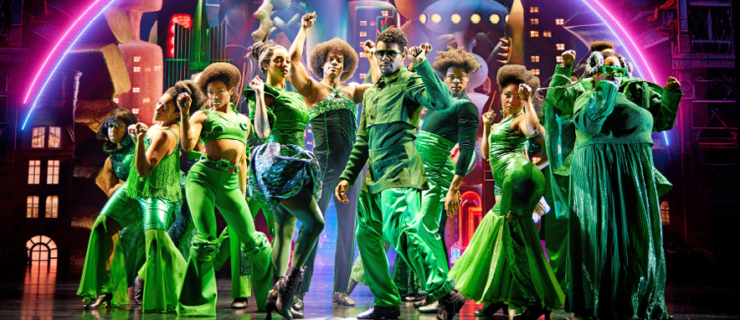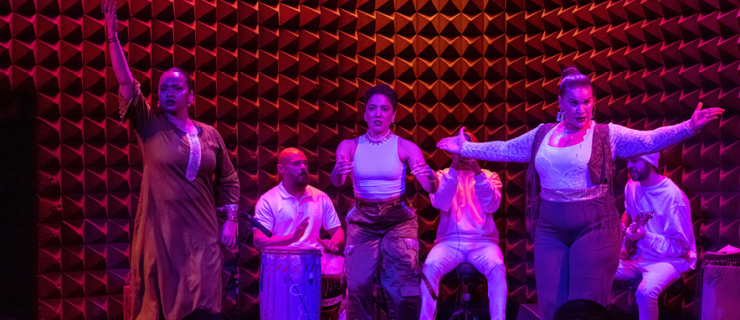JaQuel Knight: Changing the Game, From Choreography to Copyright
“Can you imagine if TikTok had been a thing during ‘Single Ladies’?” asks choreographer JaQuel Knight, with a chuckle.
Go ahead and imagine it: thousands of TikTokers posting their own takes on Knight’s indelible choreography. The song setting streaming records as fans play it on repeat, trying to get the hand flip just so. A dance-driven #SingleLadiesChallenge, inevitably.
It’s a fun thought exercise that also captures a tectonic shift in the cultural landscape. Dance has long played a critical role in the entertainment industry. But as visually oriented social media platforms have risen (and risen, and risen) over the past several years, dance has increasingly become, as Knight says, “the main character.” Beyoncé’s 2009 “Single Ladies (Put a Ring on It)” video, with its unequivocal celebration of choreography, heralded a new era: Today, it’s often a great dance that propels a song to the top of the charts.
“People are no longer saying, ‘Have you heard the Beyoncé song?’ ” says Knight, now one of the star’s go-to choreographers. “It’s ‘Have you seen the Beyoncé record?’ ”

What hasn’t changed is the industry’s treatment of dance artists. On large commercial music and film projects, most creative leaders often receive generous compensation, and residual payments for further use of their work. But choreographers typically get only a daily or weekly rate, based on their level and experience. The situation appears even starker when the choreographic contributions of social media creators are factored—or, rather, not factored—into the equation. “Over the past year and a half, so many of the biggest records were directly tied to TikTok dances,” Knight says. “Those songs made millions. And the creators of the dances received zero.”
Last year, Knight launched Knight Choreography and Music Publishing Inc. with the goal of addressing that inequity head-on. To compel the entertainment world to respect dance artists, his new enterprise has begun copyrighting commercial choreography—not just Knight’s work, but also the work of other creators, particularly artists of color.
It’s an industry-rattling move. It’s also a very JaQuel move. “What JaQuel has always embodied is the magic of shaking the status quo,” says tap artist and longtime friend Chloe Arnold.
From the beginning, Knight was fascinated by dance’s power to transfix audiences and transform culture. Born in North Carolina and raised in Atlanta, he grew up dancing along to MTV music videos before taking his first formal dance class at age 14. In high school, he played the saxophone in, and created movement for, the marching band, marveling at the effect choreography could have on a crowd. At only 19, he got his “Single Ladies” break after being scouted by choreographer Frank Gatson Jr.
Since then, Knight has built an extraordinary resumé. Beyoncé still lives at the top of it—he’s worked with her on two Super Bowls, four world tours, Lemonade, Homecoming and Black Is King, among other projects—but the list also includes Megan Thee Stallion, Britney Spears, Brandy, Nicole Scherzinger and Tinashe.
From the early days of his career, Knight was struck by the difference in resources allotted to white and Black music artists. Three weeks after the release of “Single Ladies,” he booked a job with Britney Spears. “My day rate for Britney was almost my weekly rate for Beyoncé,” he says. “And neither of those rates were all that good. Nothing made sense.”
Over time, Knight realized the systemic nature of the problem. “Choreographers are really the bastard kids of the industry,” he says. “We don’t have the respect that should be on our names based on the value we bring to a project, especially those of us who are Black and brown.” Earning choreographers that respect, he realized, would require forcing the industry to recognize their work’s value. And copyright—the establishment of legal ownership—would be his crowbar.
Knight created Knight Choreography and Music Publishing Inc. with the hope that it would eventually act like a traditional music publishing company, helping choreographers copyright their dances and then license those dances for use in tours, commercials, films and other areas, like video games and NFTs. To Arnold—who’s in the process of copyrighting a piece of her viral choreography for the Syncopated Ladies set to the Prince song “When Doves Cry” with the help of Knight’s company—it’s both a practical and a poetic idea.
“He’s securing the future of these dance artists in a very concrete way,” she says. “But his work also ties into bigger conversations about how, in the past, artists of color have been written out of history. If you want to challenge that kind of generational oppression, you have to create generational wealth, and that starts with ownership.”
Copyrighting movement is a notoriously byzantine process. Federal law dictates that ownership cannot exist until a creative work is “fixed.” For choreography, being captured on video is sometimes only part of the equation. A Labanotation score can provide vital additional details, but the creation of such a score is an expensive and time-consuming endeavorthat requires a specialist to transcribe every gesture (and often, for video works, every camera angle). The first dance Knight copyrighted was “Single Ladies,” which involved a hefty Labanotation score costing thousands of dollars.
The current copyright system is also geared toward concert dance works, rather than shorter commercial and social media projects. “So what do you do for all these platforms—advertisements, TikTok videos—that operate in 15- and 30-second blocks?” Knight asks.

A team of experts is helping Knight surmount those hurdles, including lawyer David Hecht, who represented the creators that sued Epic Games over its use of their dances in the video game Fortnite. Last summer, the technology company Logitech also joined up with Knight to help 10 BIPOC choreographers, Arnold among them, copyright their viral dances. The partnership developed in the wake of the #BlackTikTokStrike, which saw Black creators on the app protesting the lack of recognition for their contributions; the list of copyrights now in process features several TikTok dances by Black artists, including Keara Wilson’s “Savage” dance and Mya Johnson and Chris Cotter’s “Up” dance.
“JaQuel isn’t just talking about doing good. He’s taking action,” says Meridith Rojas, global head of entertainment and creator marketing at Logitech. “We wanted to help more artists realize that copyrighting this kind of work is possible. It’s a signal to the creators to feel more empowered to create. It’s also a signal to everybody who has felt like they can just take dance and use it without permission: Stop.” A short film documenting the Logitech collaboration is slated to premiere this year.
Going forward, Knight wants to look backward, securing copyrights for influential commercial dance works of the past. “How do we make sure we have truly given the icons that came before us their flowers?” he says. “I feel like we still owe Michael Peters”—the choreographer of Michael Jackson’s “Thriller”—“so much money for that beautiful art, which you see everywhere. The Peters estate should be rolling in dough!”
Though Knight sees copyright protection as the bedrock on which to build dance artists’ future security, he also understands that a time-consuming legal process won’t address their immediate needs. In 2020, at the start of the pandemic, Knight founded a nonprofit, The JaQuel Knight Foundation, to support dancers, particularly members of marginalized groups. During shutdowns, he partnered with relief organizations to provide grants and meals to dance artists. With the support of donors, he hopes to continue to give grants and scholarships well after the pandemic and to continue impacting, encouraging and inspiring the next generation of artists. “Just to help dancers, period—because they need help right now—that’s the goal of the foundation,” he says.
Knight is also investigating ways to eliminate the restrictive work-for-hire agreements most commercial choreographers are forced to sign, relinquishing legal rights to their work in order to receive their daily or weekly rates. “It’s insane that choreographers are slaves to this document they have to sign to get their check,” Knight says. “So now I’m in talks with state legislation about how we can get rid of work-for-hire for this field altogether.” And he hasn’t forgotten about the industry’s dancers: “If they’re on camera, I want to see them getting residual pay wherever that footage is used.”
Waging a multi-front battle against a multibillion-dollar industry can be exhausting. “There are definitely days where I’m like, ‘Could I just do my eight-counts?’ ” Knight says, laughing. “But I think all artists have to challenge themselves to care more about the legalities of it all. We have to challenge our agents. We have to challenge our managers. We have to challenge the system if we want to get to a space where dance has the respect it deserves.”





